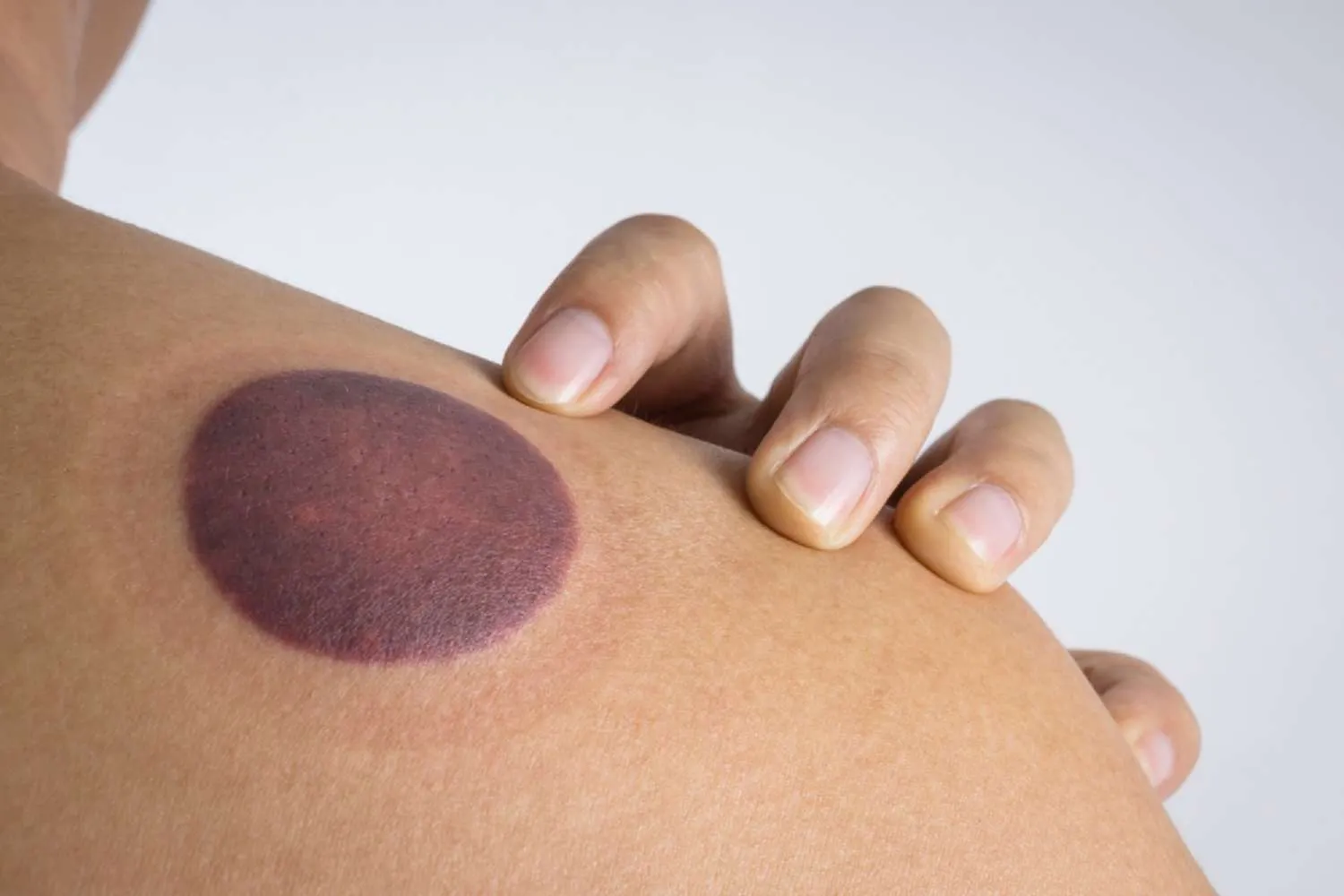Table of Contents
Understanding Impact Play
Impact play encompasses a range of activities that involve hitting or being hit with an object in a consensual, safe, and controlled environment. Engaging in impact play, individuals may employ a variety of physical actions, such as hitting, punching, and slapping. Furthermore, the implements used can vary greatly, from everyday household items like wooden spoons and belts to specialized BDSM Femdom equipment such as floggers, paddles, and canes.
At its core, impact play is inherently tied to the principles of creativity and consent. Lucy Rowett, a certified sex coach and clinical sexologist, underscores that the consensual nature of these practices is paramount. Participants must openly communicate their boundaries, limits, and safe words to ensure that the experience is mutually enjoyable and respectful. This emphasis on consent and clear communication is crucial in building trust and safety within the dynamics of the play.
While often associated with BDSM scenes, impact play has a broader applicability, extending beyond the confines of traditional dungeons. It offers a wide spectrum of sensory experiences, from the light, playful taps that can elicit laughter to the intense, thudding strikes that may elicit deeper emotional and physical responses. These varied sensations can enhance intimacy and deepen the connection between partners, providing an avenue for exploring power dynamics, trust, and vulnerability.
Impact play isn’t just about the physical sensations; it’s also deeply psychological. For some, the anticipation and the ritual surrounding the act can heighten the overall experience. The act of preparing the space, selecting tools, and gradually building intensity can create a profoundly immersive and intimate atmosphere. This psychological component adds depth to the physical sensations, creating a holistic, engaging practice that appeals to various individuals and relationship dynamics.
Ultimately, understanding impact play involves recognizing it as a multifaceted practice that can be tailored to suit the desires and comfort levels of all involved. When practiced with emphasis on safety, consent, and communication, it becomes a powerful means of exploring personal boundaries and enhancing interpersonal connections.
The Importance of Consent and Communication
Engaging in impact play requires a foundation of trust, mutual respect, and open communication between partners. Consent, which is a fundamental aspect of any intimate encounter, becomes even more critical when venturing into impact play due to its physical and psychological intensity. Ensuring that all parties involved are fully aware and agreeable to the activities is paramount for a safe and enjoyable experience.
Before engaging in impact play, partners should initiate a thorough discussion covering various aspects of the activity. This includes establishing clear boundaries and having an honest conversation about each person’s comfort levels and limitations. Discussing preferred types of play, areas of the body that are off-limits, and potential triggers is essential to avoid any unintentional harm or discomfort.
One effective way to boost communication is by agreeing on safe words or signals. Safe words act as a pre-agreed cue to pause or stop the activity immediately, ensuring that all participants have control at all times. Selecting a word that is easy to remember and unmistakably clear, even in moments of high intensity, can significantly enhance the sense of security and trust.
Additionally, pre-negotiation is a vital step in promoting transparency and setting expectations. As interests and comfort levels can evolve, regular check-ins and ongoing dialogues are crucial to maintain a consensual and satisfying impact play experience. This continuous communication helps partners identify and address any concerns, making necessary adjustments to their play.
Trust plays a crucial role in facilitating these open dialogues. Building trust requires time and effort, and it is essential for both partners to feel secure in expressing their desires and boundaries. By fostering a trust-based environment, partners can explore impact play with confidence, ensuring that the experience is consensual, safe, and enjoyable for everyone involved.
Choosing the Right Location
The choice of location for impact play greatly affects the overall experience and must be carefully considered. Opting for an environment that is safe, private, and comfortable is paramount. Whether you choose a private room at home or a specialized BDSM studio, each setting has its own advantages and disadvantages that should be evaluated before engaging in impact play.
When considering a private room in your home, privacy is often the most significant advantage. A locked door can ensure you won’t be interrupted, providing the necessary mental comfort and security for both participants. It’s also easier to control the ambiance, such as adjusting lighting and temperature, which can contribute to the overall experience. However, it’s crucial to ensure that the room is free of potential hazards. Clear the area of any sharp objects, breakables, or anything that could pose a risk during intense movements.
On the other hand, specialized BDSM studios offer a professionally designed space tailored specifically for activities like impact play. These studios are typically equipped with various furniture and tools that enhance the play experience, such as padded benches, suspension points, and soundproofing. Additionally, these studios often include safety features like first aid kits and secure storage for personal items. However, the cost of renting such a space and the necessity of scheduling in advance can be potential downsides. Prior to booking, ensure the studio’s policies and amenities align with your needs.
In either setting, it’s essential to communicate openly with your partner about the desired atmosphere and any specific requirements. Safety should always come first; consider any emergency protocols you might need. Establishing a safe word and ensuring you both understand its use is vital.
Ultimately, the right location can significantly enhance your impact play sessions by offering a safe, private, and comfortable environment, allowing you to focus on the consensual and pleasurable aspects of the experience.
Identifying Impact Zones on the Body

Understanding the anatomy and physiology of the body is crucial when engaging in impact play to ensure safety and consensual enjoyment. Different areas of the body respond uniquely to impact, and recognizing these variations is key to avoiding unnecessary harm and maximizing pleasure.
For instance, the buttocks and upper thighs are generally acknowledged as safe zones for impact play. These areas contain ample muscle and fatty tissue, which act as natural cushioning against strikes. The buttocks, in particular, are frequently targeted due to their resilience and the rich network of nerve endings that can heighten the sensory experience. Similarly, the upper thighs are well-padded and can safely absorb impact when appropriate techniques are utilized.
Conversely, some regions of the body are high-risk zones and should be approached with caution or avoided altogether. The lower back, for example, houses critical organs such as the kidneys, which are highly vulnerable to injury from impact. Striking this area can cause severe internal damage and long-term health consequences. Similarly, the neck, spine, and joints should be avoided due to their structural and functional complexity. Even light impacts in these areas can result in significant harm.
Providing clear illustrations or thorough descriptions of both safe and unsafe zones can significantly aid understanding. Visual aids can help in precisely identifying the difference between a well-cushioned area suitable for impact and a sensitive zone that must be protected. Using detailed guidance on proper targeting not only enhances safety but also enriches the overall experience by ensuring that all practices are conducted within the bounds of consensual and informed engagement.
By conscientiously learning and respecting the body’s varied impact zones, participants in impact play can prioritize safety and mutual pleasure, fostering an environment of trust and informed consent.
Understanding ‘Stingy’ vs. ‘Thuddy’ Sensations
Impact play encompasses a variety of sensations that can be broadly categorized as ‘stingy’ or ‘thuddy.’ Both terms refer to the different physical experiences that can arise from this form of play, and understanding these distinctions is crucial for participants to tailor their experiences according to their preferences and limits.
‘Stingy’ sensations are characterized by a quick, sharp impact that often feels more superficial but can leave a lasting, intense sensation. Implements that produce stingy sensations include riding crops, floggers with thin tails, canes, and whips. The sensation can be likened to the snap of a rubber band against the skin, often creating a more immediate but transient feeling of pain. Stingy impacts can heighten sensitivity in targeted areas, lending themselves to practices where precision and impact intensity are key components.
In contrast, ‘thuddy’ sensations are deeper, heavier, and more resonant. They tend to affect muscle and tissue, providing a more profound and diffuse feeling of pressure and impact. Implements such as paddles, heavy floggers, and certain types of bats are known to produce thuddiness. The sensation can resemble the forceful push of a weighted object, often leaving a lasting echo of the impact. Thuddy sensations are generally perceived as more tolerable over time, making them suitable for those who seek a more enduring yet less acute form of stimulation.
Understanding the differentiation between stingy and thuddy sensations allows participants to communicate their preferences more effectively and choose the appropriate implements for their play sessions. This knowledge is vital for structuring an experience that aligns with the desired intensity and type of sensation, ensuring a safe and consensual practice. By exploring both stingy and thuddy impacts, individuals can deepen their enjoyment and enhance their understanding of the diverse spectra of sensations within impact play.
Choosing and Using Implements

When delving into the realm of impact play, selecting the appropriate implements is crucial for ensuring a pleasurable and safe experience. The variety of tools available ranges from the simplicity of one’s hands to a diverse array of specialized instruments. Understanding the distinct characteristics of these implements, including paddles, whips, floggers, and even household items, is essential for a well-rounded impact play practice.
Hands are perhaps the most intuitive and versatile tools for impact play. They allow for a high degree of control and provide tactile feedback on the force and location of impact. For those venturing into more specialized equipment, paddles are a popular choice. Available in materials such as wood, leather, and silicone, each material offers a different sensation ranging from the thuddy impacts of heavy wooden paddles to the stingier sensations provided by leather and silicone.
Whips and floggers introduce more complexity into impact play. Whips, typically made from leather or synthetic materials, allow for precise and targeted strikes. They require skill to use effectively and safely, as improper technique can cause unintended harm. Floggers, on the other hand, consist of multiple tails that distribute the force of the impact over a broader area. This makes them ideal for those who prefer a combination of stinging and thudding sensations. The number of tails, their length, and the material they are made from all contribute to the overall experience.
Everyday household items like wooden spoons, belts, or even rubber spatulas can also be repurposed for impact play. While these items may not be designed for this purpose, they can be effective when used with care. It is important to ensure that any household item used is clean, in good condition, and free of sharp edges that might cause injury.
Regardless of the implement chosen, proper technique and maintenance are key. Techniques should be practiced to avoid striking areas with dense nerve clusters, such as the spine, kidneys, and joints. Regularly checking and caring for your implements will ensure longevity and reduce the risk of injury. Paddles and whips should be cleaned according to their material specifications, and floggers should be untangled and aired out to prevent damage.
Assessing Pain Tolerance and Aftercare
Pain tolerance is a remarkably individual experience, influenced by an array of factors including physical health, emotional state, and personal thresholds. For those engaging in impact play, it is imperative to assess and communicate pain tolerance effectively. Prior to engaging in any activity, open dialogue about boundaries and limits is essential. This conversation should include a clear understanding of what implements will be used, as different tools can elicit a wide range of sensations and impacts on the body.
During impact play, regular check-ins are crucial. Establishing a safe word or signal allows participants to communicate their limits without breaking the dynamics of the play. This ensures that all activities remain enjoyable and consensual. Both the giver and receiver should pay close attention to verbal and non-verbal cues. Changes in breathing patterns, muscle tension, and vocal sounds can all indicate how the receiver is coping with the sensations.
Aftercare is an indispensable component of impact play, catering to both the physical and emotional well-being of the participants. Post-play care helps mitigate any potential negative reactions and fosters a sense of security and trust. Physically, aftercare might involve soothing the skin with lotions or creams, providing hydration, and addressing any injuries or soreness. It is equally important to consider emotional needs; gentle debriefing, affirmations, cuddling, or simply spending quiet time together can significantly aid in the post-play recovery process.
Understanding and respecting each individual’s pain tolerance and aftercare needs is fundamental to ensuring that impact play remains a safe, consensual, and pleasurable experience for all involved. This attention to detail and communication not only prevents harm but also enhances the overall bond between participants, reinforcing mutual respect and care.
Considering Marks and Aftereffects
Marks and aftereffects are inherent components of impact play that can significantly vary depending on the individual’s preferences and the types of implements and techniques used. For some individuals, the visual or sensory reminders—bruises, welts, or redness—serve as an extended form of the experience, a personal badge of their journey through impact play. Others might find that these marks are undesirable and may prefer to avoid them, aiming for playful interactions with minimal lasting impressions.
The choice of implements plays a crucial role in determining the level and type of marks left behind. For instance, broad, flat implements like paddles tend to distribute force over a larger area resulting in less bruising, albeit potentially leaving wider, less intense marks. Conversely, implements such as canes or whips concentrate impact on narrower areas, making them more likely to produce welts or deep bruises. Those new to impact play or wishing to avoid significant marks might prefer softer materials like suede or fur-lined floggers, which minimize intense pressure points while still delivering a satisfying impact.
Effective communication is paramount in navigating the realm of marks and aftereffects. Discussing boundaries, preferences, and comfort levels before any session not only sets clear expectations but also enhances trust and mutual respect. Partners should feel empowered to discuss what kinds of marks, if any, are acceptable, and establish safe words or gestures to ensure immediate cessation of any activity that becomes uncomfortable.
Caring for marks post-session is equally important and contributes to a safer and more enjoyable experience. Applying ice to bruises can help reduce swelling, while arnica gel or lotion might hasten the healing process of any marks. Hydration and rest further promote the body’s natural recovery mechanisms. Ensuring that proper aftercare is planned and executed reflects a responsible approach to impact play, honoring the physical and emotional well-being of all participants.
Resource Article : MissBonnie 2024







